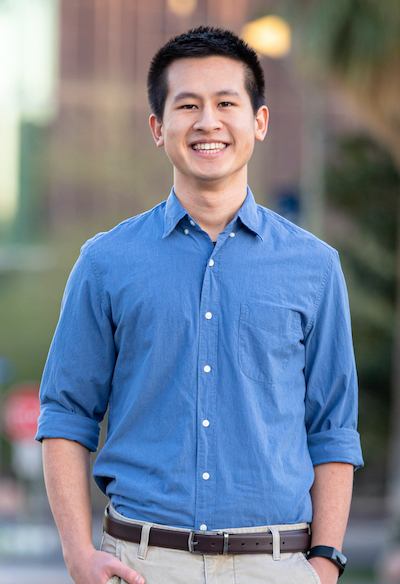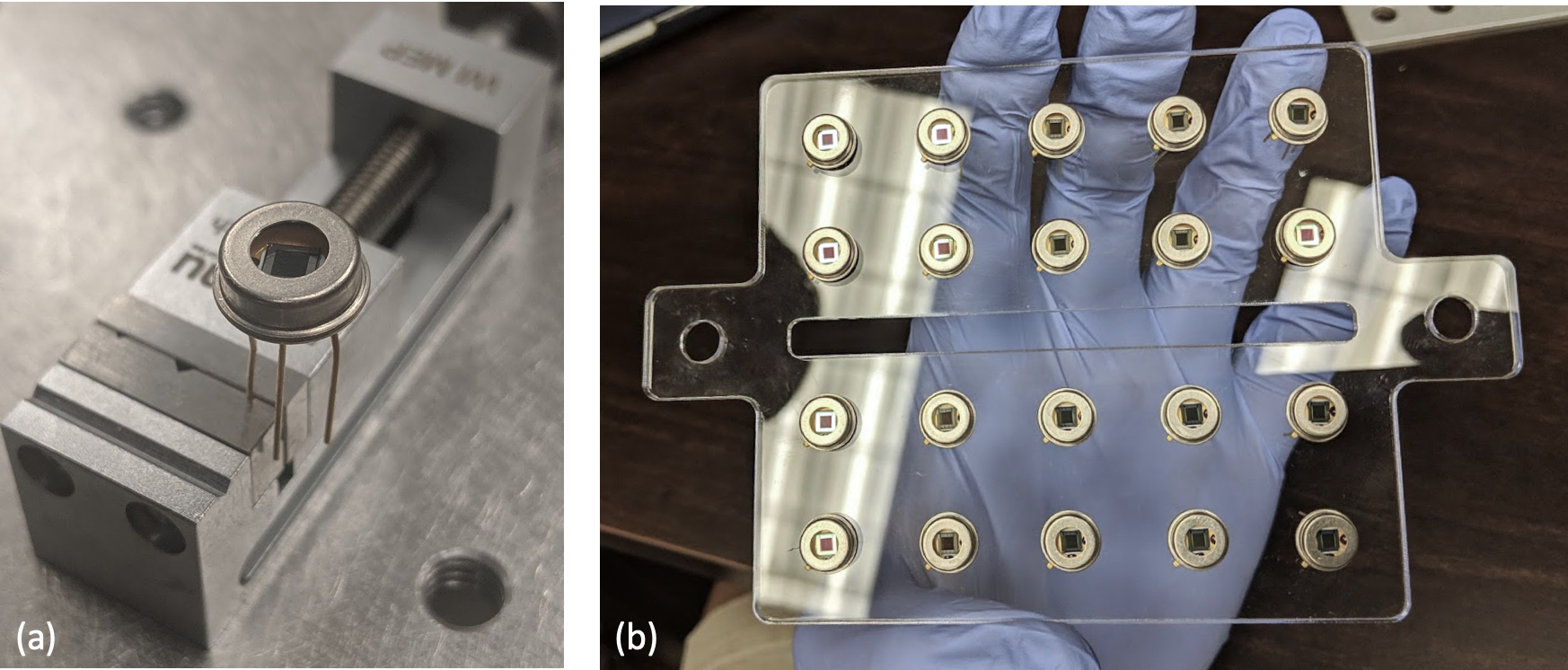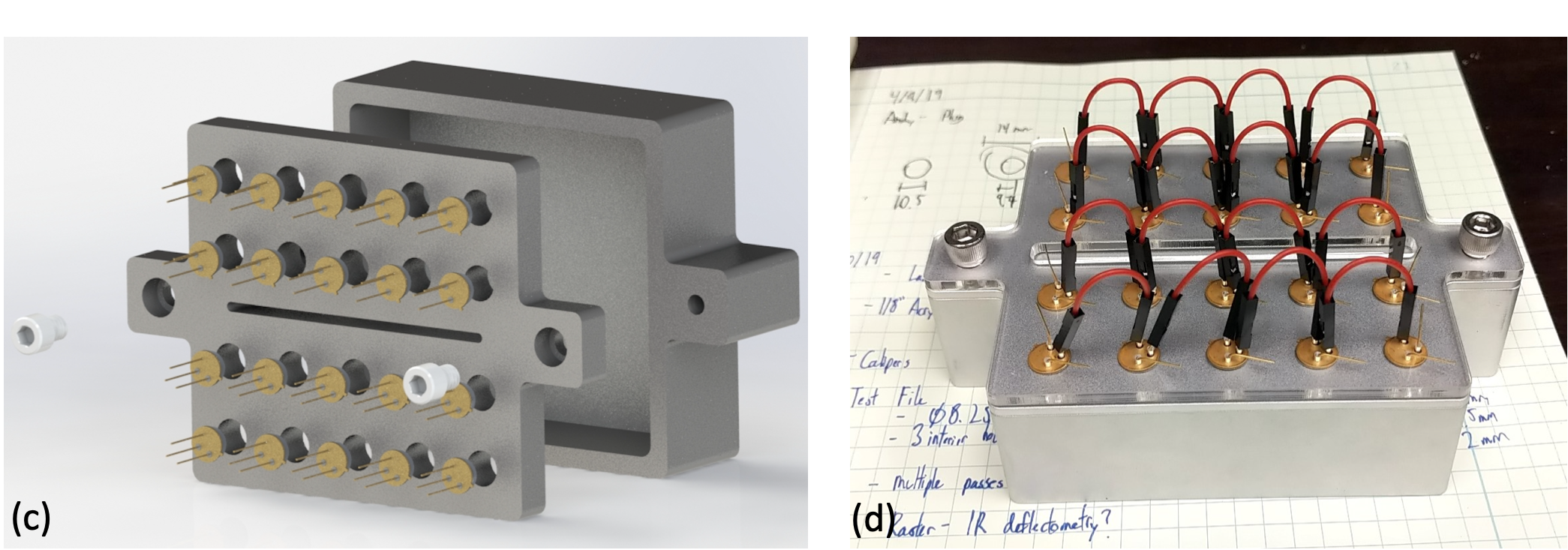
Henry Quach
Mechanical EngineerHigh-Contrast Source for Infrared Deflectometry
Abstract: We introduce a scalable temporally modulated long-wave infrared source design. The design makes use of an array of resistive blackbody heating elements which radiate into a custom aluminum integrating cavity. The output of the box is a rectangular slit, built to match the traditional tungsten ribbon profile for an infrared deflectometry source. Temporal modulation allows for signal isolation and improved resilience to background fluctuations in an infrared deflectometry source. Infrared deflectometry measurements using the new source design and a traditional tungsten ribbon, both with similar radiant flux, were compared for a ground glass surface, an aluminum blank, and an aluminum blank under thermal load (150 °C). Signal-to-noise ratio was ∼4 times higher for the new design and demonstrated improved source temporal stability and geometry. Further, the new design successfully measured the previously untestable hot aluminum flat. The new design improves infrared deflectometry and allows for high contrast thermal deflectometry measurements of optics under thermal load.


a. The Axetris EMIRS200 TO-39 source features a resistive membrane that, when current is applied, acts as a pseudo-blackbody source. b. The emitters can be connected in series or in parallel, much like a group of resistors, to create a patterned source (b). A SolidWorks rendering (c) and photo (d) of the cavity assembly demonstrate the simplicity of the geometry. Surface roughness on the scale of the wavelength and optimization internal geometry parameters contribute to the Lambertian distribution at the exit slit.
The Long-wave Infrared Time-modulated Integrating cavity Source (LITMIS) leverages the EMIRS200 elements as flexibly-placed, highly time-responsive input nodes for radiative emission. Nodes radiate LWIR spectra into the integrating cavity, where the light is scattered and achieves a uniform, non-directional emission when exiting the rectangular output slit. Cavity length, interior wall roughness, and exit slit geometry are all optimized to minimize reflection losses. Furthermore, interior walls may be protected with high reflectivity coatings, like silver or gold, and the number of input caps may be increased to scale power output.
For direct comparison with the ribbon source modality, an integrating cavity was designed and machined to match the geometrical and radiometric properties of an existing, functional tungsten rectangular ribbon source used for deflectometry (Su et al. 2011). These properties include source surface area and source radiance. The cavity was designed with 20 input ‘cap’ sources, operating at approximately 70% maximum power for safety and in order to achieve a 1 Hz flicker rate. The cavity itself was optimized to achieve both spatial uniformity over a rectangular exit which featured a pseudo-Lambertian emission angle, while the interior of the cavity was a box shape made of bare aluminum with a surface roughness of 3.4 μm RMS. The system was modeled in LightTools, a non-sequential ray tracing simulation software, and the location of the heating elements, as well as interior cavity dimensions and surface roughness, were optimized to achieve a uniform power output across the exit slit while maintaining non-directional output over approximately 2𝜋 steradians. The output was simulated at the slit, where uniform power was the goal. The near field irradiance pattern, as well as the final optimized box design, are shown below.

a. The optimized design is modeled in LightTools®, where the irradiance at the surface of the box is simulated to assure high spatial uniformity across the exit slit. b. The emission intensity as a function of output angle is also analyzed, demonstrating high angular uniformity.
Journal: Optics Express
Key Words: Optical Metrology, Long-Wave Infrared (LWIR), Temporal Modulation
Full Citation: Logan R. Graves , Henry Quach, R. John Koshel, Chang-Jin Oh, and Dae Wook Kim, "High contrast thermal deflectometry using long-wave infrared time modulated integrating cavity source," Opt. Express 27, 28660-28678 (2019).